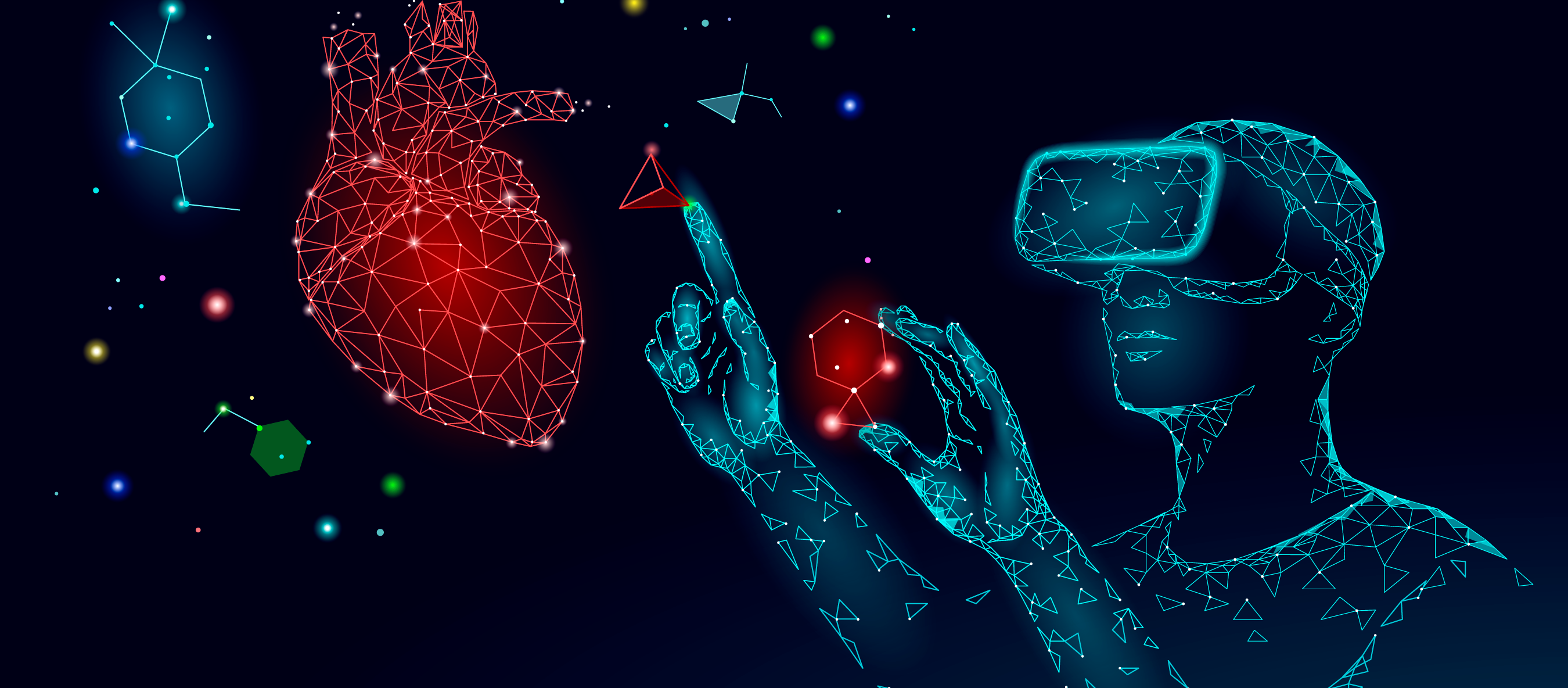 Science cardiology operation research concept.
Science cardiology operation research concept.
Walter Garcia was finishing his technical degree in nursing education amid COVID-19. Eight months before his graduation, his technical university closed its doors to face-to-face classes and rapidly shifted to virtual instruction. Fortunately, Walter did not have problems assuring access to a PC and internet to take his courses. Nonetheless, Walter was concerned because he would have to miss important classes, practical in nature, that were aimed to develop his technical skills on patients’ triage and emergency evacuation. How could he develop these skills using WebEx or reading a manual? Walter was frustrated and worried about having to complete his degree with skills gaps in these critical areas.
Fortunately for Walter, his lab teacher, William O’Donovan, was savvy in technology and learned about a Virtual Reality application used by the medical industry to develop nurses’ technical skills to respond to medical emergencies. After having the nursing school dean's agreement, William purchased Head Mounting Display (HMD) headsets and licenses that would allow his students access to this immersive medical emergency simulator. After giving students the proper training to use the tech, students were given access to this virtual course. The course could be taken at a designated room at the college’s library, or students could borrow the headsets and try this simulation experience at home. Through the simulator, Walter was, after all, able to enter a virtual emergency room and be exposed firsthand to medical emergencies that could emulate vividly real-life situations.
Virtual Reality training is becoming more accessible to students
Virtual Reality training is often known as the process of learning in a simulated or artificial environment. VR training has existed in the realm of education for over half a century but has dramatically expanded over the past fifteen years as VR simulators are becoming less expensive to develop and increasingly realistic. Training using Virtual Reality has recently been applied in many education fields, but primarily in health and safety, engineering, and technical education. Numerous studies assessing the use of immersive training in education yielded promising results in educational outcomes.
In some educational fields, the development of adequate cognitive, technical, and socio-emotional skills remains a challenge for trainees and their tutors, partly because of the limited availability of hands-on training or access to appropriate content and learning situations. Even before the pandemic, it has become particularly challenging for education systems to supply learning opportunities that provide students with hands-on pedagogical experiences necessary to develop practical skills, especially for programs that require the use of laboratories. As a response, educators are starting to rely on VR simulations to develop learning experiences that would otherwise not be easily accessible to students. VR simulations can provide students with practical training opportunities without pressure, danger, and allowing for repeated opportunities to practice. Also, VR simulations can provide students access to situations and learning environments (such as traveling within a cell, simulated scenarios for public speaking, among others) that would otherwise be very difficult or impossible to access. Such opportunities can accelerate students' learning curve in a simulated environment, reproducing real-life conditions and situations without time or space limitations and much fewer risks than real environments.
Virtual Reality training offers many pedagogical advantages
VR simulations offer the great advantage of providing students and teachers with a standardized, reproducible environment for repeated and optimized training. VR simulations allow gamification, performance metrics, and collaborative features (using avatars) embedded in the software, enabling continuous peer interaction, active learning, enjoyment, and performance feedback – all elements that enhance proficiency-based training. Constructivism is often cited as one theoretical framework that supports the implementation of learning in virtual environments. Constructivism suggests that students learn by constructing knowledge and incorporating it into their existing knowledge structure. Thus, constructivist learning environments can increase active learning, motivation, interactivity, and personalized learning. VR simulations can be conducive to higher student motivation and presence, two channels through which VR training simulations can influence student learning. As a result, VR simulations have been regarded as a pedagogical method with the potential to increase student learning.
Is Virtual Reality training successful at developing student’s skills?
A recent study, supported by the Korea World Bank Partnerships Facility, provides a systematic review of the extent to which VR training can successfully develop students’ skills across different education fields [Meta-analysis assessing the effects of virtual reality training on student learning and skills development]. The study relies on a review of 92 different experiments that assess VR training effects on student learning through robust evaluations. Figure 1 presents descriptive statistics of the experiments included in the study. Most experiments were conducted in higher education settings in topics related to health and safety and virtual labs for engineering, science, and technical education.
Results in the study show that VR training is, on average, more effective than traditional training, developing students' technical, practical, and socio-emotional skills. Results are particularly promising in the fields of health and safety, engineering, and technical education. In general, results reveal that students exposed to VR training, score higher in learning assessments, than students exposed to the same curricular content delivered through traditional training methods
Results also indicate that students exposed to VR instruction, report higher scores in socio-emotional skills assessments after completing their training than their peers receiving traditional instruction. The analysis also indicates that students exposed to VR training are more efficient using inputs, time, and/or avoiding performance errors than students exposed to traditional training, per additional hour of instruction.
Figure 1: Descriptive statistics of the primary experiments assessing the effects of VR on student learning
The main results of the study can be summarized as follows:
- A total of 72 experiments show that VR training is equally or more conducive to improve student learning outcomes than traditional training.
- For each additional hour of training, students exposed to VR training score 3 percent higher in learning assessments, when compared to students exposed to the same curricular content delivered through traditional training methods.
- Students who complete VR training report 20% higher levels of confidence and self-efficacy towards learning after they complete their courses
- Students who are exposed to VR training are, on average, up to 30 percent more efficient (using inputs, time, and/or avoiding performance errors) than students exposed to traditional training per additional hour of instruction
More evidence is needed on the effects of VR training in developing countries
Most studies assessing the effects of VR training on learning have been conducted in OECD countries, notably in the United States, United Kingdom, and Canada. As such, the promising results of VR training may not necessarily hold in all educational settings because several factors necessary for VR training to succeed (e.g., connectivity, availability of equipment and IT support, students' and teachers' dominium of essential digital skills, among others) are not necessarily assured in many education institutions in developing countries. Also, it will be essential to continue to assess the cost-effectiveness of VR training. While VR training's cost-effectiveness is likely to vary depending on many parameters such as course duration, field, and type of technology used, it is not always assured. Indeed, this type of instruction could be cost-effective because it provides savings compared to other alternative multimedia or traditional laboratories. VR training development requires software development and equipment, maintenance, support, and updates, which need sustained investments. To date, not many studies assessing the effects of VR training have focused on conducting a cost-benefit or cost-effectiveness analysis of VR instruction compared to traditional training methods. Having more such information will be crucial to assess the scalability potential of VR training across education systems.
In summary, VR training tends to be an effective mechanism of instruction to develop students’ skills and has proved to be a valuable tool for students like Walter, especially amid COVID-19. Walter received a job offer to assist the emergency room at his local hospital, where he will surely encounter similar situations to those he was exposed to when taking the VR training. Moving forward, it will be important to continue to assess the pros and cons of using VR for pedagogical instruction for different subjects as well as its cost-effectiveness and scalability.





Join the Conversation